Uncategorized

 Prior to 1956, the road and highway system in the United States, well…lets just say, it left something to be desired…like passable roads for instance. Yes, there were a few highways, but on June 29, 1956, President Dwight Eisenhower signed the Federal-Aid Highway Act of 1956. This bill changed the highways by creating a 41,000-mile “National System of Interstate and Defense Highways” that would, according to Eisenhower, eliminate unsafe roads, inefficient routes, traffic jams and all of the other things that got in the way of “speedy, safe transcontinental travel.” At the same time, highway advocates argued, “in case of atomic attack on our key cities, the road net [would] permit quick evacuation of target areas.” The 1956 law, which allocated more than $30 billion for the construction, declared that the construction of an elaborate expressway system was “essential to the national interest.” The plan included a lot of discussion on things like where exactly the highways should be built, and how much of the cost should be carried by the federal government versus the individual states. Several competing bills went through Congress before 1956, like the ones spearheaded by the retired general and engineer Lucius D Clay, Senator Albert Gore Sr, and Representative George H Fallon, who called his program the “National System of Interstate and Defense Highways,” thereby linking the nationwide construction of highways with the preservation of a strong national defense.
Prior to 1956, the road and highway system in the United States, well…lets just say, it left something to be desired…like passable roads for instance. Yes, there were a few highways, but on June 29, 1956, President Dwight Eisenhower signed the Federal-Aid Highway Act of 1956. This bill changed the highways by creating a 41,000-mile “National System of Interstate and Defense Highways” that would, according to Eisenhower, eliminate unsafe roads, inefficient routes, traffic jams and all of the other things that got in the way of “speedy, safe transcontinental travel.” At the same time, highway advocates argued, “in case of atomic attack on our key cities, the road net [would] permit quick evacuation of target areas.” The 1956 law, which allocated more than $30 billion for the construction, declared that the construction of an elaborate expressway system was “essential to the national interest.” The plan included a lot of discussion on things like where exactly the highways should be built, and how much of the cost should be carried by the federal government versus the individual states. Several competing bills went through Congress before 1956, like the ones spearheaded by the retired general and engineer Lucius D Clay, Senator Albert Gore Sr, and Representative George H Fallon, who called his program the “National System of Interstate and Defense Highways,” thereby linking the nationwide construction of highways with the preservation of a strong national defense.
For President Eisenhower, however, who had participated in the United States Army’s first transcontinental motor convoy in 1919, during World War II, there was a realization that the country needed a better highway system. He had seen Germany’s Autobahn network, and admired the efficiency of it. In January 1956, Eisenhower repeated his 1954 State of the Union address call for a “modern, interstate highway system.” Later that month, Fallon introduced a revised version of his bill as the Federal Highway Act of 1956. It provided for a 41,000 mile national system of interstate and defense highways to be built over 13 years, with the federal government paying for 90 percent, or $24.8 billion. To raise funds for the project, Congress increased the gas tax from two to three cents per gallon and impose a series of other highway user tax changes. On June 26, 1956, the Senate approved the final version of the bill by a vote of 89 to 1. Senator Russell Long, who opposed the gas tax increase, cast the single “no” vote. That same day, the House approved the bill by a voice vote, and three days later, Eisenhower signed it into law.
The highway construction began almost immediately. With the construction came the employment of tens of thousands of workers and the use of billions of tons of gravel and asphalt. The system fueled a surge in the interstate trucking industry. That was good, but soon it pushed aside the railroads to gain the lion’s share of the domestic shipping market. Interstate highway construction also fostered the growth of roadside businesses such as restaurants, most of which were fast-food chains, hotels and amusement parks. By the 1960s, an estimated one in seven Americans was employed directly or indirectly by the automobile industry. Not only 
 that, but America had become a nation of drivers. Legislation has extended the Interstate Highway Revenue Act three times. Many historians say it is Eisenhower’s greatest domestic achievement. Many called the years between 1956 and 1966 “the Greatest Decade.” Still, critics of the system have pointed to its less positive effects, including the loss of productive farmland and the demise of small businesses and towns in more isolated parts of the country. I suppose that’s true, but it was inevitable.
that, but America had become a nation of drivers. Legislation has extended the Interstate Highway Revenue Act three times. Many historians say it is Eisenhower’s greatest domestic achievement. Many called the years between 1956 and 1966 “the Greatest Decade.” Still, critics of the system have pointed to its less positive effects, including the loss of productive farmland and the demise of small businesses and towns in more isolated parts of the country. I suppose that’s true, but it was inevitable.

 My grand nephew, Xander Spethman is growing up so fast. It seems like yesterday that he was a little boy, and now I see a tall young man of 14 years. He has grown so tall and strong that I find myself having to do a double take to make sure it is Xander that I’m looking at…in fact, I recently saw him on the trail my husband and I walk on, and almost didn’t recognize him at all…and talking to him doesn’t help either, because his voice is suddenly pretty deep. I’m sure his years of doing sports have contributed to his new physique, and the fact that his dad, Steve Spethman is a man with big shoulders had a lot to do with it too, I’m sure. It could be Xander’s size that makes his a great protector of those who are being bullied, but I don’t really think it is. I think that being a protector is just part of Xander’s nature. He is kind and compassionate, and he doesn’t like to see anyone getting their feelings hurt, or being hurt physically…other than maybe the payers on the opposing team in football, and even then, he would not really want to hurt them…just take them down.
My grand nephew, Xander Spethman is growing up so fast. It seems like yesterday that he was a little boy, and now I see a tall young man of 14 years. He has grown so tall and strong that I find myself having to do a double take to make sure it is Xander that I’m looking at…in fact, I recently saw him on the trail my husband and I walk on, and almost didn’t recognize him at all…and talking to him doesn’t help either, because his voice is suddenly pretty deep. I’m sure his years of doing sports have contributed to his new physique, and the fact that his dad, Steve Spethman is a man with big shoulders had a lot to do with it too, I’m sure. It could be Xander’s size that makes his a great protector of those who are being bullied, but I don’t really think it is. I think that being a protector is just part of Xander’s nature. He is kind and compassionate, and he doesn’t like to see anyone getting their feelings hurt, or being hurt physically…other than maybe the payers on the opposing team in football, and even then, he would not really want to hurt them…just take them down.
Xander is a great marksman in his own right, having been trained by his dad and mom to shoot guns at a young age. He has a good respect for human life, and gun safety. He knows what can happen if a person gets careless, and is determined not to be a person who is careless. He is very proud this year, in that he earned the money for and bought his own hunting rifle. Not bad for a 13 year old kid. He likes the feeling of accomplishment her gets from doing things on his own, but that doesn’t mean that his parents don’t mean the world to him…rather, just that they have trained him well to be independent…an part of good parenting. nevertheless, his mom, Jenny Spethman will always consider him her baby boy…as any mother would do.

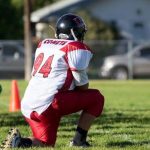 As with many teenagers, Xander is spending this year wearing braces. I’m not sure how he feels about that, but I don’t know many teenagers that like it much. Still, when the time for braces is over, most of them are very happy with their new smile. Xander is a pretty easy going guy, and doesn’t let too many things bother him very much, so I suspect that he is ok with it, and given his size, who would dare to pick on him about it anyway. Today is Xander’s 14th birthday. Xander, we are all very proud of the young man you have become. Happy birthday Xander!! Have a great day!! We love you!!
As with many teenagers, Xander is spending this year wearing braces. I’m not sure how he feels about that, but I don’t know many teenagers that like it much. Still, when the time for braces is over, most of them are very happy with their new smile. Xander is a pretty easy going guy, and doesn’t let too many things bother him very much, so I suspect that he is ok with it, and given his size, who would dare to pick on him about it anyway. Today is Xander’s 14th birthday. Xander, we are all very proud of the young man you have become. Happy birthday Xander!! Have a great day!! We love you!!

 As a thankful nation took time to honor it’s fallen peace officers, my brother-in-law, Chris Hadlock, who was Wyoming’s Peace Officer of the Year, was among those invited to attend the services to honor fallen comrades across the nation. A solemn occasion, it began on Saturday with a candlelight vigil, to remember those officers who lost their lives in the line of duty this year. It was an awe inspiring ceremony with an awe inspiring crowd of police officers, their families, and of course, the families of the fallen. This ceremony is, after all, for the loved ones of the fallen heroes…the families, who also made the ultimate sacrifice. No one can understand what a sacrifice that was, until they have gone through it themselves.
As a thankful nation took time to honor it’s fallen peace officers, my brother-in-law, Chris Hadlock, who was Wyoming’s Peace Officer of the Year, was among those invited to attend the services to honor fallen comrades across the nation. A solemn occasion, it began on Saturday with a candlelight vigil, to remember those officers who lost their lives in the line of duty this year. It was an awe inspiring ceremony with an awe inspiring crowd of police officers, their families, and of course, the families of the fallen. This ceremony is, after all, for the loved ones of the fallen heroes…the families, who also made the ultimate sacrifice. No one can understand what a sacrifice that was, until they have gone through it themselves.
Yesterday was the 36th Annual National Peace Officers Memorial Service. President Trump and Vice President Pence both spoke at the service, and when they were finished speaking, there was an atmosphere of hope among the officers and their families. President Trump has taken a strong stance concerning our law enforcement officers, saying “The attacks on our police are a stain on the very fabric of our society, and you are entitled to leadership at the highest level that will draw a bright line in the sand — not a red line in the sand that isn’t gone over — but a bright line in the sand. And we will protect you. That I can tell you. And we will say, “Enough is enough.” The attacks on our police must end, and they must end right now.” He also said, 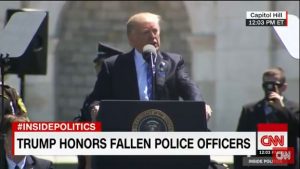
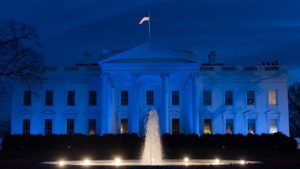 “We must also end the reckless words of incitement that give rise to danger and give rise to violence. It is time to work with our cops, not against them, but to support them in making our streets safe; not to obstruct them — which we’re doing, we obstruct them. It is time for all Americans, from all parties and beliefs, to join together in a simple goal to ensure that every child in America has the right to grow up in safety, security and peace. True social justice means a future where every child, in every neighborhood, can play outside without fear, can walk home safely from school, and can live out the beautiful dreams that fill their heart.”
“We must also end the reckless words of incitement that give rise to danger and give rise to violence. It is time to work with our cops, not against them, but to support them in making our streets safe; not to obstruct them — which we’re doing, we obstruct them. It is time for all Americans, from all parties and beliefs, to join together in a simple goal to ensure that every child in America has the right to grow up in safety, security and peace. True social justice means a future where every child, in every neighborhood, can play outside without fear, can walk home safely from school, and can live out the beautiful dreams that fill their heart.”
It was a speech filled with hope and those who were blessed enough to be there felt awe inspired….and humbled at the same time. They were standing in the midst of heroes, both living and remembered. They were all in this fight together…a fight to make our nation safer, and to make it a place where our children can play outside without fear of kidnap or death. As President Trump has stated, “One of the fundamental rights of every American is to live in a safe community. A Trump Administration will empower our law enforcement officers to do their jobs and keep our streets free of crime and violence. The Trump Administration will be a law and order administration. President Trump will honor our men and women in uniform and will support their mission of protecting the public. The dangerous anti-police atmosphere in America is wrong. The Trump Administration will end it.” In addition to that amazing speech, President Trump had the White House lit up blue in honor of the police officers of this nation.
The trip that my brother-in-law was honored with for being Wyoming’s Peace Officer of the Year, concluded 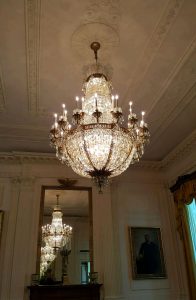

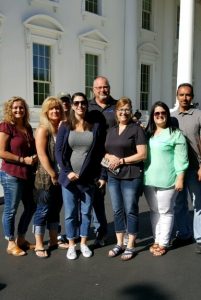 today with a tour of the White House. This is a tour that not many people get to take…especially these days. The tour and the pictures they took will be a treasure for them forever. My sister, Allyn Hadlock said that she “felt so honored and privileged to be there! It was a wonderful glimpse into the past and future” Our family is very excited that they got to take this trip, and very proud of Lieutenant Chris Hadlock, Wyoming’s Peace Officer of the Year. You’re a credit to Wyoming!!
today with a tour of the White House. This is a tour that not many people get to take…especially these days. The tour and the pictures they took will be a treasure for them forever. My sister, Allyn Hadlock said that she “felt so honored and privileged to be there! It was a wonderful glimpse into the past and future” Our family is very excited that they got to take this trip, and very proud of Lieutenant Chris Hadlock, Wyoming’s Peace Officer of the Year. You’re a credit to Wyoming!!

 When you are born, the second child in a family, you have the unique blessing of coming home to an older sibling who has just become a big sister or big brother for the first time. That was the exact blessing I got when I was born. I came home to a big sister who was excited about being the big sister. My sister, Cheryl Masterson was an amazing big sister. I have spent my life always knowing that she was there for me, and that is a very comforting feeling. I don’t know if I recognized that feeling as a baby or not, but I certainly have over the years of my life.
When you are born, the second child in a family, you have the unique blessing of coming home to an older sibling who has just become a big sister or big brother for the first time. That was the exact blessing I got when I was born. I came home to a big sister who was excited about being the big sister. My sister, Cheryl Masterson was an amazing big sister. I have spent my life always knowing that she was there for me, and that is a very comforting feeling. I don’t know if I recognized that feeling as a baby or not, but I certainly have over the years of my life.
Cheryl and I were best friends. We did everything together. She showed me how to do so many things, as the years went by, and since I never had the same stylish flair that she did, I have to say she was pretty patient with my awkwardness too. When I needed protection…real or imagined…Cheryl was there too. She was always so brave, while I might very likely hide under the blankets. Maybe that comes with being the oldest, and knowing from a very young age that she was the keeper of the younger kids. Being the oldest is a job that never really passes from a child. It isn’t just about being older in age, but knowing that the younger kids will always look up to you. It changes a person. Cheryl is a different person than I am, in part because she was the oldest, and I never had to pick up those reigns. I wasn’t the oldest child.
These days, I don’t suppose that I need as much monitoring as I used to. Nevertheless, since our parents’ passing, Cheryl always likes to know that we have made it safely from any travel destinations we are on. That is a part of what our parents always did, and something we have all tried to pick up and do now, but I believe it 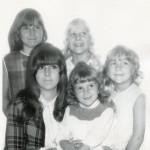
 was Cheryl that first picked up that job and carried it on. It is such a keeper of the younger kids thing to do. The oldest child always feels a duty to take care of the younger kids…no matter how old they get. I still enjoy spending time with my sister Cheryl, and as she has been all my life, she is a great blessing to me today. She is my friend and my mentor. She always takes the high road, and does the things that God would want her to do, and that makes her a great mentor. God could not have given me a better big sister. Today is Cheryl’s birthday. Happy birthday Cheryl!! Have a great day!! We love you!!
was Cheryl that first picked up that job and carried it on. It is such a keeper of the younger kids thing to do. The oldest child always feels a duty to take care of the younger kids…no matter how old they get. I still enjoy spending time with my sister Cheryl, and as she has been all my life, she is a great blessing to me today. She is my friend and my mentor. She always takes the high road, and does the things that God would want her to do, and that makes her a great mentor. God could not have given me a better big sister. Today is Cheryl’s birthday. Happy birthday Cheryl!! Have a great day!! We love you!!
 Every war has one thing in common…there are two opposing sides. That can make for a volatile situation, even years after the war is over. Take our own Civil War. That war ended in 1865, but to this day, there are those who think we should tear down any and all memorials to the heroes of the South, which of course, lost the war. It’s a tough situation, but when you think about it, is a general from the South any less brave in battle. It is all a part of he fabric that forms our nation. They did not win the war, but as we have all told our children about sports, “It’s not whether you win or lose, but how you played the game.” Now, I know that war isn’t a game, although some have indicated that it is, nevertheless, most soldiers from the South fought as bravely and as honorably as those from the north. Everyone knows that the Confederate flag is not the flag of the United States, but it is a piece of it’s history, and history is history. It is not something we should be defacing, but rather honoring, because the fought the good fight.
Every war has one thing in common…there are two opposing sides. That can make for a volatile situation, even years after the war is over. Take our own Civil War. That war ended in 1865, but to this day, there are those who think we should tear down any and all memorials to the heroes of the South, which of course, lost the war. It’s a tough situation, but when you think about it, is a general from the South any less brave in battle. It is all a part of he fabric that forms our nation. They did not win the war, but as we have all told our children about sports, “It’s not whether you win or lose, but how you played the game.” Now, I know that war isn’t a game, although some have indicated that it is, nevertheless, most soldiers from the South fought as bravely and as honorably as those from the north. Everyone knows that the Confederate flag is not the flag of the United States, but it is a piece of it’s history, and history is history. It is not something we should be defacing, but rather honoring, because the fought the good fight.
President Regan felt the same way when he visited Germany on May 5, 1985. The Holocaust was a horrible 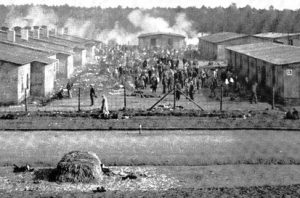 event, and not one that the majority of the German people agreed with, but they were in a difficult place too. They were following orders. Had they not done so, they would have been killed…here was no doubt. So, when Reagan went to Germany and to the cemeteries of the fallen German soldiers, should he have been disrespectful…of course not. He was a visitor in their country, and whether their politics was right or wrong, these were their fallen heroes. They were fathers, sons, brothers, uncles, grandfathers to someone in Germany, and they were loved. As Reagan said that day, “Here they lie. Never to hope. Never to pray. Never to love. Never to heal. Never to laugh. Never to cry.” Lives taken…too soon, by war, and that made them a nation’s heroes.
event, and not one that the majority of the German people agreed with, but they were in a difficult place too. They were following orders. Had they not done so, they would have been killed…here was no doubt. So, when Reagan went to Germany and to the cemeteries of the fallen German soldiers, should he have been disrespectful…of course not. He was a visitor in their country, and whether their politics was right or wrong, these were their fallen heroes. They were fathers, sons, brothers, uncles, grandfathers to someone in Germany, and they were loved. As Reagan said that day, “Here they lie. Never to hope. Never to pray. Never to love. Never to heal. Never to laugh. Never to cry.” Lives taken…too soon, by war, and that made them a nation’s heroes.
No two sides will ever agree, and emotions run high after a war, but sometimes people take things too far…retaliating for things they believe were wrong, years and even centuries after the events took place. The dead 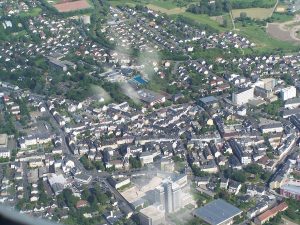 are dead, and their memorials should be left alone, whether they are private, state, or national. To someone, somewhere, their efforts were heroic, and just because we have a different view of the things they stood for, does not give is the right to terrorize their graves and memorials. I suppose that many people would argue this point with me, and let it be known that I am not condoning the wrongs done by evil nations, I an simply saying that we should leave the memorials alone, because they do no harm. If people want to make a statement, they should teach their children right from wrong, so that they understand the difference between a cause, and a heroic soldier of that cause. One could arguably be condemned, while the other should not be.
are dead, and their memorials should be left alone, whether they are private, state, or national. To someone, somewhere, their efforts were heroic, and just because we have a different view of the things they stood for, does not give is the right to terrorize their graves and memorials. I suppose that many people would argue this point with me, and let it be known that I am not condoning the wrongs done by evil nations, I an simply saying that we should leave the memorials alone, because they do no harm. If people want to make a statement, they should teach their children right from wrong, so that they understand the difference between a cause, and a heroic soldier of that cause. One could arguably be condemned, while the other should not be.

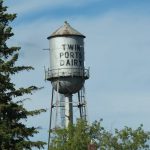 I’m sure that everyone has heard the little jokes people make to tease someone about which parent they look like…or sometimes don’t. They might say something like, “You look like the milkman.” Of course, the indication is that the mother had an affair, but sometimes such a joke can backfire on the teller of the joke. When I say this, I am speaking from experience…not as an adult, but rather as a child. You see, my sister, Cheryl Masterson and I do look like the milk man…because the milkman was our dad. Of course our younger sisters do too, but he wasn’t a milk man when they were born.
I’m sure that everyone has heard the little jokes people make to tease someone about which parent they look like…or sometimes don’t. They might say something like, “You look like the milkman.” Of course, the indication is that the mother had an affair, but sometimes such a joke can backfire on the teller of the joke. When I say this, I am speaking from experience…not as an adult, but rather as a child. You see, my sister, Cheryl Masterson and I do look like the milk man…because the milkman was our dad. Of course our younger sisters do too, but he wasn’t a milk man when they were born.
During the early years of their marriage, my dad worked for a company called Twin Ports Dairy, in Superior, Wisconsin. Over the remaining years of his life, my dad held various other jobs, and the one I remember the best was when he was a welder, first for Fred Dewell company, and later for WOTCO. Both of these were in Casper, Wyoming. One of the ones that I found the most interesting was when he worked for Douglas Aircraft. This was before he was married, and before World War II. It was this job that qualified him to become the 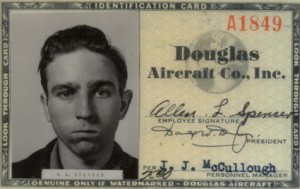 Flight Engineer on the B-17 Bomber. A man who worked building airplanes, would have a unique ability in that field. He also did work in the lumber yards and in the oil fields, prior to my parents marriage. In fact, he was working in the oil fields when he and my mother exchanged their wonderful love letters…which my sisters and I recently came across among their things. There are many parts to a man, and most men will do several types of work before settling on the one they will do for the rest of their life. My dad was no different, but in the end it would be the work that he did at the suggestion of his older brother, my Uncle Bill, that my dad would do the longest…welding. As World War II was progressing to the point of Americas necessary involvement, Uncle Bill was worried about his little brother, and he really hoped that his skill as a welder would keep my Dad on the home front, but it was his skill with airplanes that would win out in the end, and Dad would go to war…and thankfully come back home again.
Flight Engineer on the B-17 Bomber. A man who worked building airplanes, would have a unique ability in that field. He also did work in the lumber yards and in the oil fields, prior to my parents marriage. In fact, he was working in the oil fields when he and my mother exchanged their wonderful love letters…which my sisters and I recently came across among their things. There are many parts to a man, and most men will do several types of work before settling on the one they will do for the rest of their life. My dad was no different, but in the end it would be the work that he did at the suggestion of his older brother, my Uncle Bill, that my dad would do the longest…welding. As World War II was progressing to the point of Americas necessary involvement, Uncle Bill was worried about his little brother, and he really hoped that his skill as a welder would keep my Dad on the home front, but it was his skill with airplanes that would win out in the end, and Dad would go to war…and thankfully come back home again.
All those parts of my dad…along with his deep love of family would make him into the person we all knew and dearly loved, but I think for my mom, its possible that the Milkman job was a personal favorite. After all, it kept 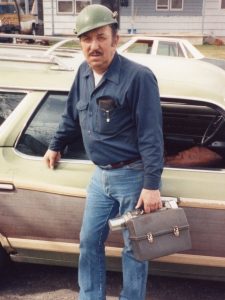
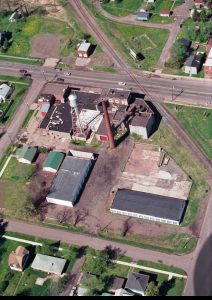 him close to home, and it was a safe job for her husband and the father of her children. I think it was her favorite, because of all the times I have heard her talk about that one, and I can relate to the part about keeping him home, because sometimes when he had to go out of town for work in the years after we moved to Casper, I simply didn’t feel good until he came home. I don’t mean sad…I mean I felt physically ill until he came home. My sisters and I loved our daddy very much, and we wanted him to be at home. In fact, I still wish he was at home…here on Earth, instead of in Heaven, because I miss him very much. Today would have been my dad’s 93rd birthday. Happy birthday in Heaven Dad. We all love and miss you very much, and can’t wait to see you and Mom again.
him close to home, and it was a safe job for her husband and the father of her children. I think it was her favorite, because of all the times I have heard her talk about that one, and I can relate to the part about keeping him home, because sometimes when he had to go out of town for work in the years after we moved to Casper, I simply didn’t feel good until he came home. I don’t mean sad…I mean I felt physically ill until he came home. My sisters and I loved our daddy very much, and we wanted him to be at home. In fact, I still wish he was at home…here on Earth, instead of in Heaven, because I miss him very much. Today would have been my dad’s 93rd birthday. Happy birthday in Heaven Dad. We all love and miss you very much, and can’t wait to see you and Mom again.

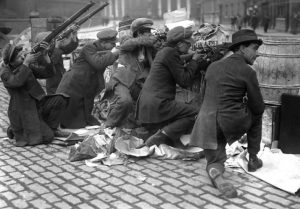 Because my family has some history in England and Ireland, the history of that area holds an interest for me. Through my DNA, I have found out that much of the family I previously thought of as English, actually originated in France. Nevertheless, they spent the majority of the centuries in England and Ireland. That said, the feuds between the two nations have been as interesting to me as the Revolutionary War. I suppose that when a nation turns an area into a territory, and then that area decides to become it’s own nation, there can be a bit of an uproar…to put it mildly. The parent nation is usually very much against the independence of the child nation…for lack of a better word.
Because my family has some history in England and Ireland, the history of that area holds an interest for me. Through my DNA, I have found out that much of the family I previously thought of as English, actually originated in France. Nevertheless, they spent the majority of the centuries in England and Ireland. That said, the feuds between the two nations have been as interesting to me as the Revolutionary War. I suppose that when a nation turns an area into a territory, and then that area decides to become it’s own nation, there can be a bit of an uproar…to put it mildly. The parent nation is usually very much against the independence of the child nation…for lack of a better word.
It was on April 24, 1916…Easter Monday, that the Irish Republican Brotherhood, which was a secret organization of Irish nationalists led by Patrick Pearse, launched the so-called Easter Rebellion in Dublin. It was an armed uprising against British rule. The Brotherhood was assisted by militant Irish socialists under James Connolly. Pearse and his fellow Republicans rioted and attacked British provincial government headquarters across Dublin and seized the Irish capital’s General Post Office. After their quick initial success, they proclaimed the independence of Ireland, and by morning they controlled much of the city of Dublin. They were fighting against the repressive government of the United Kingdom that they had been under for centuries. Their hopes of freedom were dashed later the next day when the British authorities launched a counterattack. By April 29th, it was all over. The uprising had been crushed. Nevertheless, the Easter Rebellion is considered a significant marker on the road to establishing an independent Irish republic.
Following the uprising, Pearse and 14 other nationalist leaders were executed for their participation, but they were held up as martyrs by many in Ireland. There was a lot of anger among most Irish people for the British, who had enacted a series of harsh anti-Catholic restrictions, the Penal Laws, in the 18th century, and then let 1.5 million Irish starve during the Potato Famine of 1845-1848. Armed protest continued after the Easter Rebellion and in 1921, 26 of Ireland’s 32 counties won independence with the declaration of the Irish Free State. The Free State became an independent republic in 1949. However, six northeastern counties of the Emerald Isle remained part of the United Kingdom. This prompted some nationalists to reorganize themselves into the Irish Republican Army (IRA) to continue their struggle for full Irish independence.
In the late 1960s, spurred on in part by the United States civil rights movement, Catholics in Northern Ireland, who had long been discriminated against by British policies that favored Irish Protestants, advocated for justice. Riots broke out between Catholics and Protestants in the region and the violence escalated as the pro-Catholic IRA battled British troops. Most people have heard about this struggle over the years. An ongoing series of terrorist bombings and attacks ensued in a drawn-out conflict that came to be known as “The Troubles.” Peace talks 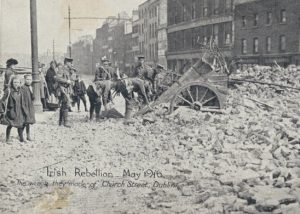
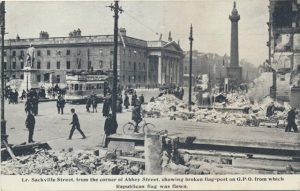 eventually took place throughout the mid to late 1990s, but a permanent end to the violence remained elusive, until July 2005, when IRA finally announced that its members would give up all their weapons and would pursue the group’s objectives solely through peaceful means. By the fall of 2006, the Independent Monitoring Commission reported that the IRA’s military campaign to end British rule was over.
eventually took place throughout the mid to late 1990s, but a permanent end to the violence remained elusive, until July 2005, when IRA finally announced that its members would give up all their weapons and would pursue the group’s objectives solely through peaceful means. By the fall of 2006, the Independent Monitoring Commission reported that the IRA’s military campaign to end British rule was over.
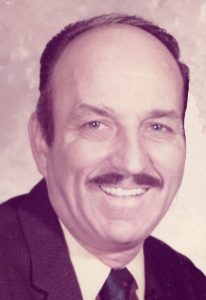
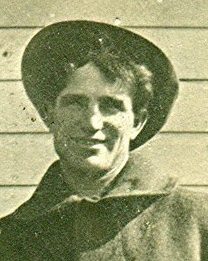 Over the years, I can recall that my dad, Allen Lewis Spencer had a number of hammers, of differing handles and sizes…like most men do, but for as long as I can remember, one hammer was always there. It wasn’t that this hammer was made of gold, or even looked fancy. It had a plain handle, but I suspect it is a hardwood, and not a simple pine. The handle is a medium toned wood, but it may have darkened with age and use. It also has a scorch mark about five inches long along one side, that happened when it was laid a little too close to a campfire. Dad rescued it just in the nick of time. He had to save it, you see. It wasn’t just any hammer…it was his dad’s hammer, and with his dad’s passing, the hammer was given to my dad.
Over the years, I can recall that my dad, Allen Lewis Spencer had a number of hammers, of differing handles and sizes…like most men do, but for as long as I can remember, one hammer was always there. It wasn’t that this hammer was made of gold, or even looked fancy. It had a plain handle, but I suspect it is a hardwood, and not a simple pine. The handle is a medium toned wood, but it may have darkened with age and use. It also has a scorch mark about five inches long along one side, that happened when it was laid a little too close to a campfire. Dad rescued it just in the nick of time. He had to save it, you see. It wasn’t just any hammer…it was his dad’s hammer, and with his dad’s passing, the hammer was given to my dad.
Most wooden handled hammers don’t have a long handle life. That is probably the main reason that many, if not most hammers are made of metal these days. This wooden handled hammer is different, however. My grandfather, Allen Luther Spencer was a carpenter for the Great Northern Railway. His job was to build and repair seats, trim, walls, and floors…anything made of wood on the trains of the Great Northern Railway. He also made tables and chairs for his own family, and he did it all with that same hammer that my dad inherited upon his passing. Unfortunately, I never knew my grandfather, because he passed away before my parents were married. That leaves my sisters and me with only the stories we have heard from family and my Uncle Bill Spencer’s family history. I do know that while my grandfather’s work might never have been in the caliber of my cousins Gene Fredrick, and his sons, Tim and Shawn, he did make some nice things. What impresses me the most is that any work needing a hammer was done by the same hammer that my dad inherited, and that even after all the use my dad has give the hammer, it is still in 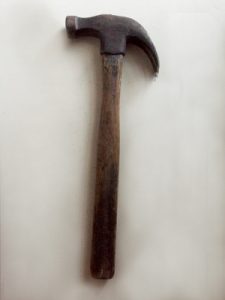
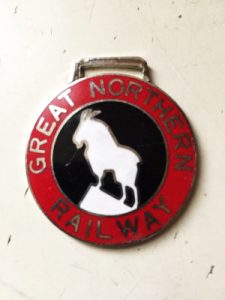 amazing shape. Things were just made well in those days.
amazing shape. Things were just made well in those days.
My dad took great care of that hammer, because it was as much a treasure to him as it is to me. It is so much more than just a hammer, it was my dad’s hammer, and his dad’s hammer. The handle still has the oil from Dad’s hand on it, making that spot darker than the rest of the handle, and I can tell you, that I will not be using the hammer, nor will I clean off that oil, or sand off the scorch mark, or the one little sliver of wood that was torn off of the handle at some point. You see, I think the hammer is just perfect the way it is, and I plan to display it with no changes to it at all, because it was my dad’s hammer, and to me…that makes it priceless.
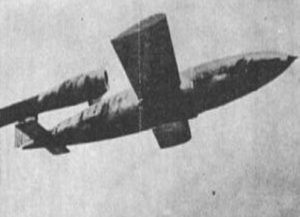
 Every time I research one of the weapons used in war, I am more and more stunned by the hatred that brings the need to destroy one another. During World War II, Hitler continuously created…or rather had his scientists create newer, more powerful, and more devastating bombs. His V-1 missile, also known as the V-1 flying bomb, or in German: Vergeltungswaffe 1, meaning “Vengeance Weapon 1” became known to the Allies as the buzz bomb, or doodlebug. In Germany it was known as Kirschkern, or cherrystone, and as Maikäfer or maybug. It was an early cruise missile, and also the first production aircraft to use a pulsejet for power.
Every time I research one of the weapons used in war, I am more and more stunned by the hatred that brings the need to destroy one another. During World War II, Hitler continuously created…or rather had his scientists create newer, more powerful, and more devastating bombs. His V-1 missile, also known as the V-1 flying bomb, or in German: Vergeltungswaffe 1, meaning “Vengeance Weapon 1” became known to the Allies as the buzz bomb, or doodlebug. In Germany it was known as Kirschkern, or cherrystone, and as Maikäfer or maybug. It was an early cruise missile, and also the first production aircraft to use a pulsejet for power.
The V-1 was developed at Peenemünde Army Research Center by the Nazi German Luftwaffe during World War II. During initial development it was known by the codename “Cherry Stone.” It was first of the so-called “Vengeance weapons” (V-weapons or Vergeltungswaffen) series designed for terror bombing of London. As one of my readers, Greg (sorry, I don’t know his last name) pointed out to me, it was one of the V weapons…the V-3 to be exact that would ultimately cause the death of Joseph Kennedy, but that is a story for another day. The range of the V-1 missile was limited, and so the thousands of V-1 missiles launched into England were fired from launch facilities along the French (Pas-de-Calais) and Dutch coasts. The first V-1 was launched at London on 13 June 1944, one week after, and actually prompted by the successful Allied landings in Europe. At its peak, more than one hundred V-1s a day were fired at south-east England, 9,521 in total, decreasing in number as sites were overrun until October 1944, when the last V-1 site in range of Britain was overrun by Allied forces. After this, the V-1s were directed at the port of Antwerp and other targets in Belgium, with 2,448 V-1s being launched. The attacks stopped only a month before the war in Europe ended, when the last launch site in the Low Countries was overrun on March 29, 1945.
It took a V-1 about 15 minutes to travel from its launch pad in Calais, France to the heart of London…a distance of nearly 95 miles. Nearly 10,000 V-1s were launched from sites in Northern France over an 80 day period beginning in June 1944. Their targets included London, as well as other cities in southern England. At the peak of the bombing, more than 100 rockets were hitting Britain daily. Casualties climbed to 22,000 people, with more than 6,000 of them fatalities. Hitler hoped his new weapons would crush British morale, bringing 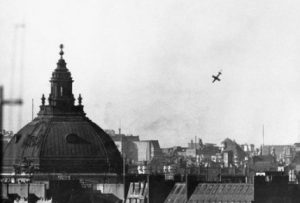
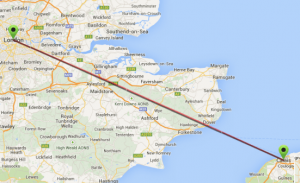 surrender. More V-1s would later be fired from inside Germany itself at Liege and the port of Antwerp. Hitler had underestimated the British, however. The British operated an arrangement of air defenses, including anti-aircraft guns and fighter aircraft, to intercept the bombs before they reached their targets as part of Operation Crossbow, while the launch sites and underground V-1 storage depots were targets of strategic bombings.
surrender. More V-1s would later be fired from inside Germany itself at Liege and the port of Antwerp. Hitler had underestimated the British, however. The British operated an arrangement of air defenses, including anti-aircraft guns and fighter aircraft, to intercept the bombs before they reached their targets as part of Operation Crossbow, while the launch sites and underground V-1 storage depots were targets of strategic bombings.
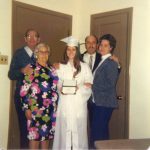 Recently, I heard a saying that has really made me think. “We take photos as a return ticket to a moment otherwise gone.” The thing about that thought that struck me the most, was when I considered moments otherwise gone…forever. I have always loved photography. From the time I was a little girl and received my first camera, I was hooked. There were years I wasn’t so good about taking pictures, and mistakes I made, such as not including people in my photos enough, not writing down the names of people and the locations, and the biggest one in my mind, not being in the pictures enough. So many people these day take selfies, and then there are the selfies that are ridiculed because “the person takes too many selfies.” I suppose that can be an issue, but when you think about it, they will always have that moment, and if that selfie made them look and feel especially pretty or handsome, so much the better. It is a moment, frozen in time…a memory that will always be with them.
Recently, I heard a saying that has really made me think. “We take photos as a return ticket to a moment otherwise gone.” The thing about that thought that struck me the most, was when I considered moments otherwise gone…forever. I have always loved photography. From the time I was a little girl and received my first camera, I was hooked. There were years I wasn’t so good about taking pictures, and mistakes I made, such as not including people in my photos enough, not writing down the names of people and the locations, and the biggest one in my mind, not being in the pictures enough. So many people these day take selfies, and then there are the selfies that are ridiculed because “the person takes too many selfies.” I suppose that can be an issue, but when you think about it, they will always have that moment, and if that selfie made them look and feel especially pretty or handsome, so much the better. It is a moment, frozen in time…a memory that will always be with them.
When I look back at the funerals of my parents and my father-in-law, and the slide shows we did for them, I  found myself amazed that I was having trouble locating pictures of me with them…particularly with my dad. It was a strange thing for me to realize that, until I thought about how much time I spent behind the camera and not in front of it. Since that time, I have made sure to take those pictures of my mom and me, my father-in-law, and me, and my mother-in-law and me, because I want to have those return tickets to those precious moments of the past. It’s not just about the slide show either, although that is a permanent memory of their lives, but it’s about the time spent with them. In his last two years, my dad and I spent many hours together, while I was one of his caregivers. I got to enjoy his wonderful sense of humor, as we teased each other every day. In my memory files, I can see him pretending to be asleep when I came in. Then, I would softly flick his hand, and he would accuse me of hitting him, saying, “Oh!! You struck me!” Then we would both laugh about it, because we knew that in a million years, that would never have happened. We pretended to argue, as I dressed his wounds, and helped him get dressed. Then I would step out while he finished the process, and he would come out into the living room. Whenever I am in their house, I can see those moments as vividly as if they were still there. Still, there are many moments that aren’t quite as clear, and a picture would tell the story
found myself amazed that I was having trouble locating pictures of me with them…particularly with my dad. It was a strange thing for me to realize that, until I thought about how much time I spent behind the camera and not in front of it. Since that time, I have made sure to take those pictures of my mom and me, my father-in-law, and me, and my mother-in-law and me, because I want to have those return tickets to those precious moments of the past. It’s not just about the slide show either, although that is a permanent memory of their lives, but it’s about the time spent with them. In his last two years, my dad and I spent many hours together, while I was one of his caregivers. I got to enjoy his wonderful sense of humor, as we teased each other every day. In my memory files, I can see him pretending to be asleep when I came in. Then, I would softly flick his hand, and he would accuse me of hitting him, saying, “Oh!! You struck me!” Then we would both laugh about it, because we knew that in a million years, that would never have happened. We pretended to argue, as I dressed his wounds, and helped him get dressed. Then I would step out while he finished the process, and he would come out into the living room. Whenever I am in their house, I can see those moments as vividly as if they were still there. Still, there are many moments that aren’t quite as clear, and a picture would tell the story 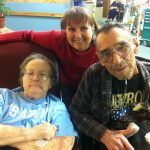 so well. And now that it is too late to take them, I really wish I had some of those moments in pictures.
so well. And now that it is too late to take them, I really wish I had some of those moments in pictures.
There are countless people who tell me how much they hate having their picture taken. I find that really sad, because it isn’t about them. They are denying others the right to have a return ticket to those precious moments. So few people think about it that way…until the day when they really wish they had a picture of them with someone special. That’s when it finally hits them. Pictures aren’t just something silly to post of Facebook. They are memories. They are return tickets to a moment otherwise gone. I think I’ve improved on those return tickets quite a bit, and for that, I am happy.

